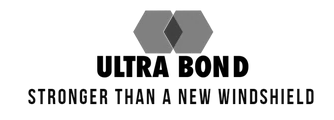Windshield Repair Resin As Strong As Glass Stated In Supreme Court Ruling
Windshield Repair Resin As Strong As Glass Stated In Supreme Court Ruling
The class action Cullen v. State Farm was an action against State Farm alleging that a windshield repair did not and could not restore the windshield to pre-loss condition and therefore State Farm owed all consumers who got a repair the money for a new windshield minus their deductible. State Farm has prevailed thus far and here is what the Ohio Supreme Court Ruling stated on the merits of windshield repair:
SUPREME COURT OF OHIO
{¶ 42} Fourth, expert testimony presented in this case does not provide common proof that repairs failed to return all windshields to preloss condition. Cullen proffered the opinion of Craig Carmody that "[w]indshield repair fails to restore the windshield glass to an acceptable condition in terms of appearance and functionality in all cases." But Carmody claimed to have examined only 17 to 22 repaired windshields, and it does not appear that his theories on glass repair have been thoroughly tested, peer-reviewed, evaluated for rate of error (including sampling error), or generally accepted in the scientific community. See generally Terry v. Caputo, 115 Ohio St.3d 351, 2007-Ohio-5023, 875 N.E.2d 72, ¶ 24-25, citing Daubert v. Merrell Dow Pharmaceuticals, Inc. (1993), 509 U.S. 579, 113 S.Ct. 2786, 125 L.Ed.2d 469. However, even if the trial court found Carmody qualified as an expert witness and his theories scientifically reliable, his opinion that a repair fails to restore the windshield to preloss condition does not establish that common questions predominate.
{¶ 43} Although Carmody testified that a repaired windshield will eventually fail, he could not say whether that failure would occur during the life of the vehicle or even during a ten-year period. Although he asserted that repaired windshields were more prone to failure, Carmody agreed that "you'd have to look at each of those windshields" to determine whether the PVB interlayer of laminated glass had been compromised and affected the function of the glass, causing it to fail. He also knew of no report of or statistics regarding windshield repairs causing delamination and spalling of glass, and he admitted that there is "no strong data" showing that the strength of repaired glass does not equal the original strength of laminated glass; moreover, he understood that one study found Ultra Bond resin to be as strong as glass and that the type of resin used in the repair "has some effect on the quality of the repair in addition to the other variables."
{¶ 44} Thus, Carmody acknowledged "the huge variation that occurs in any repair, even in controlled conditions." And notably, in examining Cullen's windshield with a microscope, Carmody could not determine that the repair had failed or that the crack had spread, and his assertions that a repaired windshield could delaminate and spall did not apply to Cullen's windshield, because the onetenth- inch chip in it had not penetrated the PVB interlayer.
{¶ 45} Carmody also criticized a repaired windshield as not being as transparent as new glass. But he acknowledged that the transparency of repaired glass could "depend on the repair" and could be affected by real-world conditions, such as windshield-wiper abrasion and exposure to UV light and chemicals in the air. He also agreed that repair can restore transparency to windshield damage, and he did not know whether tests had shown that repairs can restore windshields to the transparency required by safety standards.
{¶ 46} Cullen's other proffered expert, Gary Derian, admitted that he had no expertise in windshield repair and relied on Camrody's glass analysis in forming his opinion that repairing a windshield failed to restore it to preloss condition, both aesthetically and from a safety standpoint. But he acknowledged that determining whether the resin in a repaired windshield had degraded and failed required individually examining that windshield and that performance varied based on the type of resin used and conditions such as "temperature, humidity, cleanliness, preparation." When asked "whether or not the color of a January Term, 2013 resin changes over time," Derian indicated that a change could not be assumed:"One would want to inspect and determine how much in cases of that, that particular [resin]." And when asked how he would decide whether a repaired windshield violated established standards, Derian responded, "[I]t would have to be done on a car by car basis with an automobile engineer present at each repair."
{¶ 47} Both Carmody and Derian asserted that the repair could not restore a windshield to preloss condition, but neither had sufficient evidentiary foundation for those opinions. Derian relied on Carmody's report, and Carmody in turn based his opinion on an unscientific sample of at most 22 vehicles in addition to a single study questioning whether resin should be used to repair longer cracks. Neither Carmody nor Derian performed any tests on repaired windshields to quantify the strength, durability, and transparency of repairs, and neither knew of any tests or studies that proved their opinions and methods.
SEE A VIDEO OF THE SUPREME COURT ORAL ARGUMENT HERE
More Related Windshield Crack Repair Legal News....
Ultra Bond Releases New Windshield Crack Repair Resin Injector...
Date: Nov 13, 2017
Author: Richard Ultra Bond
Category: Long Crack Windshield Repair
For the Edge area of a long crack windshield repair our new injector syringe pressure injects the edge area of an edge crack directly from the syringe. The edge area is from the edge of the windshield in 4-5 inches, this is where there is installation stress in the glass and the gap of the crack is the widest. Our two windshield crack repair resins used in the edge area are 1600 and 2400...
How Patent Trolls and Insurers Tried To Kill Windshield....
Date: Sept 17, 2017
Author: Richard Ultra Bond
Category: Ultra Bond Legal News
Large auto glass companies, glass manufacturers, and PVB manufacturers formed a committee through the National Glass Association in 1994 attempting to attack the safety of crack repair and to write a new standard to eliminate all professional and DIY windshield crack repair...
Date: Mar 21, 2017
Author: Richard Ultra Bond
Category: Ultra Bond Legal News
This action seeks damages and additional relief against Safelite under Section 43(a)(1)(B) of the Lanham Act, 15 U.S.C. § 1125(a)(1)(B), which prohibits, inter alia, any “false or misleading description of fact, or false or misleading representation of fact, which . . . in commercial advertising or promotion, misrepresents the nature characteristics, [or] qualities . . . of . . . goods, services, or commercial activities.”




